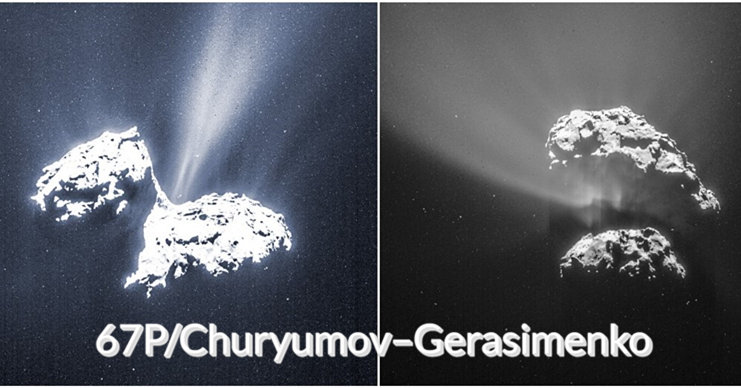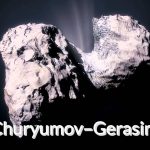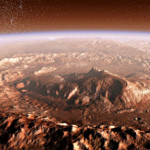When it comes to space exploration and celestial objects, 67P/Churyumov–Gerasimenko is unquestionably a fascinating subject. This comet has not only piqued the interest of scientists and space adventurers due to its enigmatic appearance but has also garnered attention for its extensive history, awe-inspiring exploration missions, and groundbreaking discoveries. From its discovery to the latest research findings, 67P/Churyumov–Gerasimenko has unveiled some of the profound mysteries of the universe.
In this article, we have delved into the characteristics of this comet, its exploration journey, significant scientific revelations, and the substantial contributions it has made to our understanding of space, celestial objects, and the cosmos. Whether you are an enthusiast of space exploration or a reader filled with curiosity about science and the universe, this piece has unveiled the mysterious veil surrounding 67P/Churyumov–Gerasimenko, allowing you to gain a deeper insight into this incredible cosmic wonder.
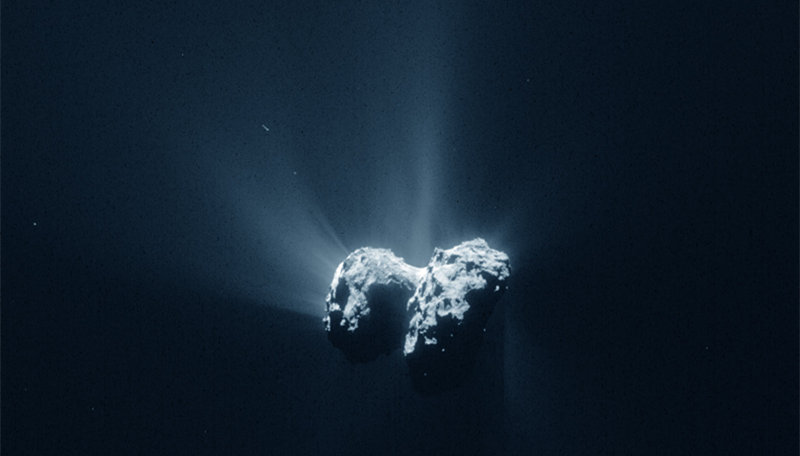
Here are 15 key points about 67P/Churyumov–Gerasimenko:
1. The orbital period of 67P/Churyumov–Gerasimenko is 6.45 years.
2. The discoverer of the comet was Klim Ivanovich Churyumov, who found it in 1969.
3. Initially, the comet was mistaken for 32P/Comas Solà, but Churyumov later identified its true identity through careful observation.
4. In 1993, the European Space Agency was granted the Rosetta spacecraft program with a total investment of 1.3 billion euros.
5. Rosetta was officially launched on March 2, 2004, with the mission to study 67P/Churyumov–Gerasimenko. It consisted of the Rosetta orbiter and the Philae lander.
6. The Rosetta orbiter successfully entered orbit around 67P/Churyumov–Gerasimenko, becoming the first spacecraft to orbit a comet at close range.
7. To rendezvous with the comet, Rosetta traveled a distance of 4 billion miles over a span of 10 years, including gravitational assists, such as flybys of Earth and Mars.
8. The comet‘s nucleus has a diameter of approximately 2.5 miles, and scientists describe its shape as resembling a duck.
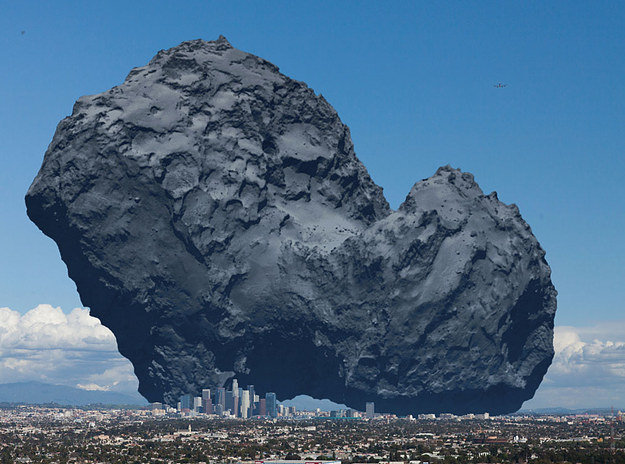
9. The comet‘s surface appears dark, covered in dust, and features various terrain characteristics, including cliffs, plains, and giant clefts.
10. Rosetta carried a variety of scientific instruments for analyzing the comet‘s water isotope composition, searching for signs of early life formation, and other research missions.
11. The presence of ice on the comet raised the interest of some scientists, as it may have provided flowing water to Earth.
12. The comet may also carry substances related to the early formation of life, such as amino acids, potentially explaining the origin of life.
13. The inclusion of the small lander named Philae was a pivotal aspect of the Rosetta mission. Philae’s historic landing on Comet 67P in 2014 marked the first-ever touchdown on a comet’s surface, leading to a series of experiments and measurements that enriched our comprehension of comets and their role in the early solar system.
14. Both the Rosetta orbiter and Philae lander were equipped with multiple scientific instruments, including ultraviolet imaging spectrometers, comet secondary ion mass spectrometers, and particle collision analyzers/dust collectors.
15. Rosetta concluded its legendary mission by staying on the surface of Comet 67P on September 30, 2016, accumulating a wealth of information for human exploration of the cosmos.
Discovery of Auroras from Comet 67P/Churyumov–Gerasimenko
Auroras, the mesmerizing displays of luminous ionized particles in the upper atmosphere, are a common phenomenon on several celestial bodies in our solar system, with the exception of Mercury. Even Jupiter’s moon, Io, and Saturn’s moon, Enceladus, boast their own dazzling auroras. However, scientists had never detected auroras on comets until recently when the latest data from the Rosetta spacecraft revealed the presence of far-ultraviolet auroral radiation around Comet 67P.
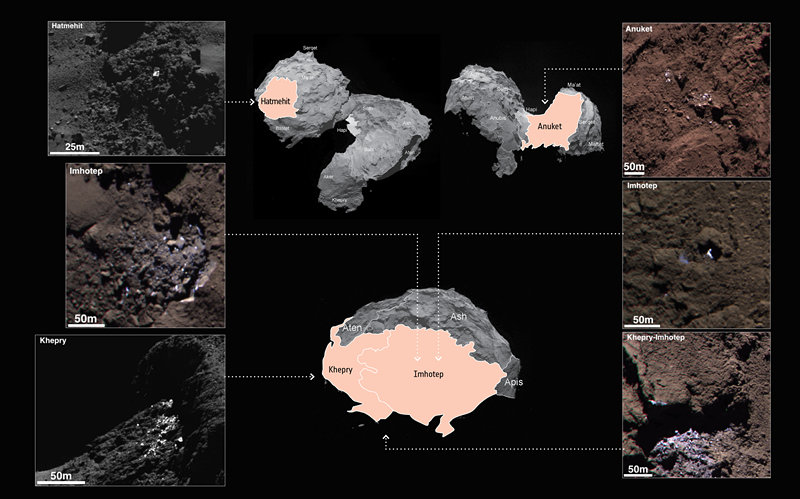
Jim Burch, a physicist from the Southwest Research Institute in the United States, expressed his astonishment, saying, “I’ve been studying Earth’s auroras for 50 years, and discovering auroras near Comet 67P, which lacks a magnetic field, is both surprising and fascinating.” Auroras result from the interaction of charged particles in a celestial body’s atmosphere. On Earth, the solar wind interacts with our magnetic field, causing charged particles to cascade into the upper atmosphere and create rippling curtains of light along magnetic field lines at the poles.
Different celestial bodies exhibit distinct auroral phenomena. For instance, auroras on Jupiter’s moons, like Io and Europa, result from interactions with Jupiter’s powerful magnetic field. On the other hand, Venus lacks a magnetic field of its own, but interactions with the solar wind create a sufficiently strong magnetic field to generate auroras. Mars, despite its thin atmosphere, has a weak magnetic field that can produce auroras. The permanent auroras on Jupiter are not solely due to solar wind but involve a mysterious mechanism yet to be fully understood.
However, Comet 67P is unique in this regard. Unlike planets and moons, the comet lacks its own magnetic field. Still, it possesses an atmosphere known as a “coma” that sublimates as the active comet gets closer to the Sun. The Alice instrument on the Rosetta spacecraft detected far-ultraviolet emissions from the coma of Comet 67P. Surprisingly, the Ion and Electron Sensor (IES) on Alice made an even more astonishing discovery – the presence of electrons originating from the solar wind.
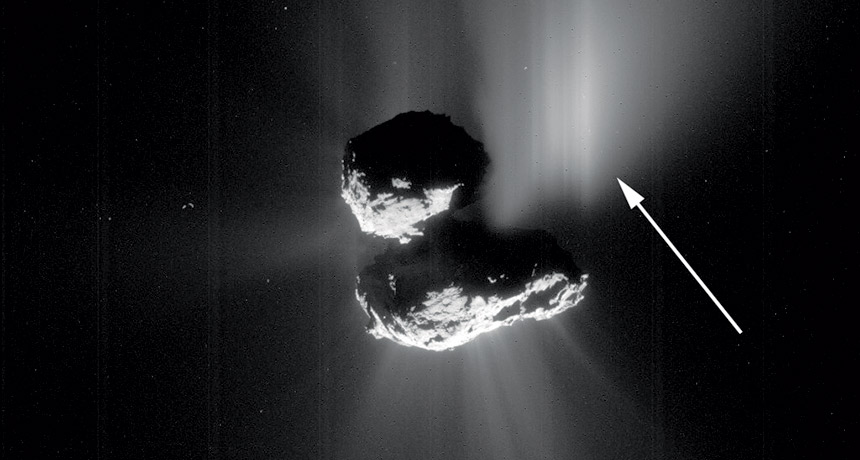
Joel Parker, an astronomer from the Southwest Research Institute, noted, “Initially, we thought the far-ultraviolet radiation from Comet 67P was a phenomenon known as ‘dayglow,’ resulting from the interaction of solar photons with the comet’s gas. We were astounded to find that the ultraviolet radiation was, in fact, an aurora, driven not by photons but by electrons in the solar wind.”
Researchers simulated a faint outgassing comet and found that the interplanetary magnetic field surrounding the comet was sufficient to provide a pathway for solar wind electrons to enter the potential well created by the electric field around the comet’s nucleus.
Despite the lack of its magnetic field, Comet 67P’s auroras exhibit a diffuse and scattered nature, in stark contrast to the “closed” auroras seen on Earth and Mars, which result from solar wind interactions. This discovery highlights the uniqueness of Comet 67P’s auroras within our solar system. It not only offers new insights into the generation of auroras but also serves as a tool for understanding space weather. By studying the emissions at varying distances from the Sun, astronomers can glean valuable information about changes in electron density within the solar wind.
The publication of this latest research report in the recent issue of the journal “Nature Astronomy” marks a significant step toward unraveling the mysteries of the cosmos and the celestial wonders it holds. It sets the stage for future studies that will continue to expand our understanding of these captivating phenomena.
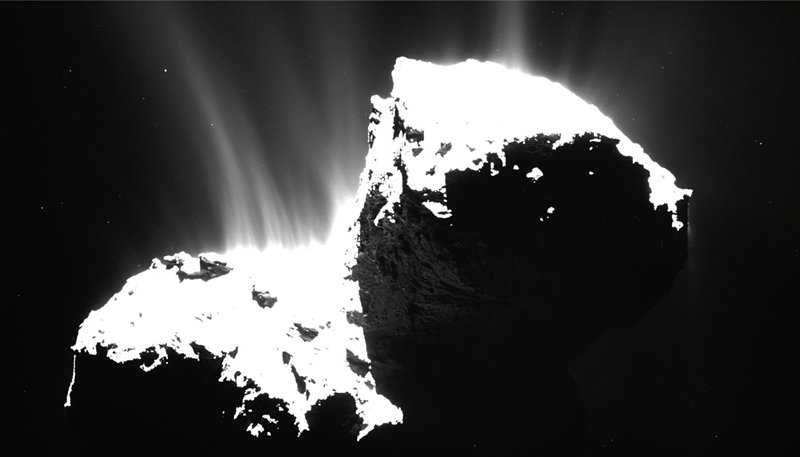
END:
After revisiting the discovery, exploration journey, and significant scientific findings of Comet 67P/Churyumov–Gerasimenko, we have not only gained a deeper understanding of the comet’s mysteries but also opened up new possibilities for future space exploration and scientific research. With the continuous advancement of technology and the evolution of space missions, we can look forward to more exciting discoveries and in-depth research in the years to come.
The future prospects for Comet 67P are brimming with potential. Scientists will continue to analyze the data already collected to gain a more comprehensive understanding of the comet’s composition and origins. Furthermore, the study of this comet will contribute to a better understanding of the formation and evolution of our solar system, as well as the potential sources of water resources on Earth.
Additionally, comet research can provide invaluable experiences for space exploration and lay the foundation for future space missions. From a technological perspective, we can expect more spacecraft to journey to comets, delving deeper into the study of these enigmatic celestial bodies and exploring their relationships with solar winds, space weather, and other phenomena in the cosmos.
In the end, the study of Comet 67P/Churyumov–Gerasimenko will not only provide critical clues to unlocking the mysteries of space but also inspire more scientific curiosity, encouraging further space exploration and paving the way for our future journeys into the cosmos. This comet has proven that miracles in the universe await our discovery, and the future exploration will continuously unfold more knowledge, discoveries, and inspirations. Regardless of where we are, we can anticipate more awe-inspiring space stories, with Comet 67P/Churyumov–Gerasimenko holding a special place in the epic of space exploration.
More UFOs and mysterious files, please check out our YouTube channel: MysFiles
Chelyabinsk meteor event: Did the UFO crush this huge meteor?
